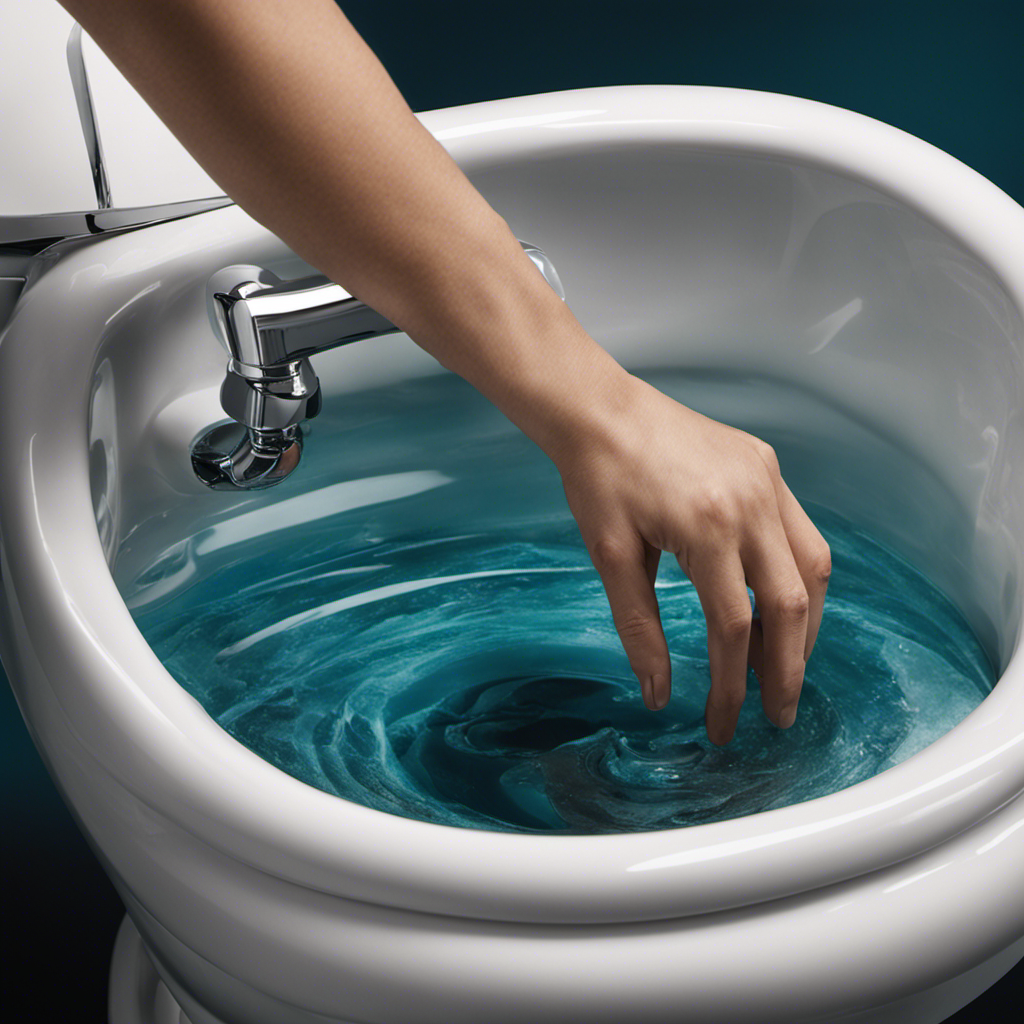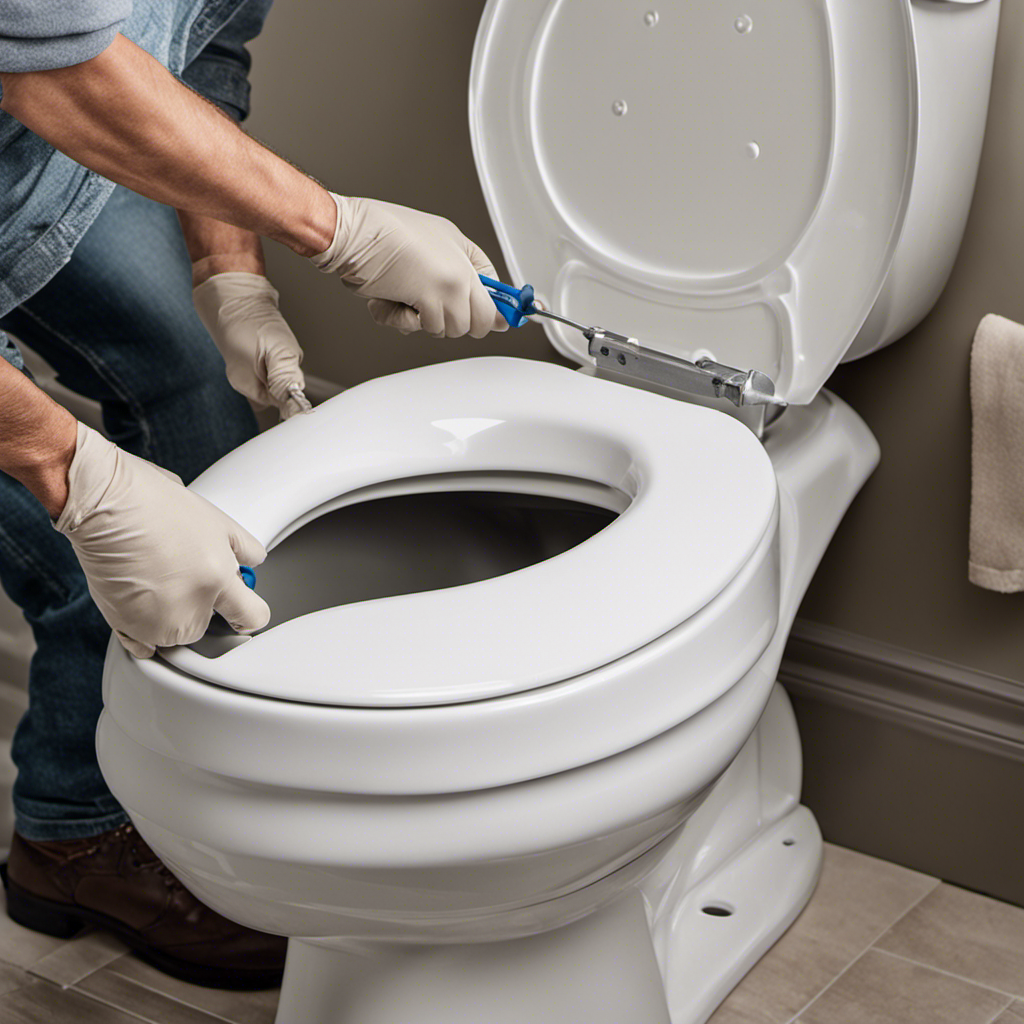As a seasoned homeowner, I’ve had my fair share of plumbing mishaps. One such issue that always seemed to perplex me was how to adjust a toilet float.
It’s as if this little device had a mind of its own, causing my toilet to constantly run or not fill up properly. But fear not, fellow DIY enthusiasts! I’ve mastered the art of adjusting the toilet float, and in this article, I’ll guide you through the process step by step.
Get ready to tackle this common household annoyance with confidence and ease.
Key Takeaways
- The toilet float controls the water level in the tank.
- Proper adjustment ensures the water level is neither too high nor too low.
- Tools needed for adjusting the toilet float include an adjustable wrench, screwdriver, pliers, and tape measure.
- Regular maintenance and adjustment prevent costly repairs.
Understanding the Toilet Float
The toilet float controls the water level in the tank. It is an essential component of the toilet’s flushing mechanism. Understanding how the toilet float mechanisms work and the importance of float adjustment is crucial for maintaining proper toilet functionality.
The toilet float is typically a buoyant device that is attached to a lever inside the toilet tank. When the water level in the tank drops, the float lowers, causing the lever to open the fill valve and allow water to enter the tank. As the water level rises, the float rises with it, and when it reaches the desired level, the lever closes the fill valve, stopping the water flow.
Proper adjustment of the toilet float is important to ensure that the water level in the tank is neither too high nor too low. If the float is set too high, the tank may overfill, leading to water wastage and potential leaks. On the other hand, if the float is set too low, the toilet may not flush properly.
To adjust the toilet float, locate the adjustment screw or rod on the float mechanism and turn it clockwise to lower the float or counterclockwise to raise it. It may require some trial and error to find the optimal water level, but it is worth the effort to ensure efficient and effective toilet performance.
Regularly checking and adjusting the float will help prevent water waste and maintain the overall functionality of your toilet.
Tools Needed for Adjusting the Toilet Float
You’ll need a few tools to make sure your toilet’s float is properly adjusted. Here are the four essential tools you’ll need:
-
Adjustable wrench: This versatile tool will help you tighten or loosen the nuts and bolts that hold the float in place. Its adjustable jaws ensure a secure grip, allowing for precise adjustments.
-
Screwdriver: A flathead or Phillips screwdriver is necessary for loosening or tightening the screws that secure the float valve. This tool is indispensable for accessing and adjusting the float mechanism.
-
Pliers: Pliers provide the necessary grip to hold and manipulate small parts, such as the float arm or rod. They allow for fine-tuning adjustments to ensure the float is at the correct level.
-
Tape measure: Accurate float adjustment is crucial for proper water level control in your toilet tank. A tape measure will help you determine the ideal water level and ensure the float is adjusted accordingly.
Having the right tools is essential for adjusting your toilet float correctly. Proper float adjustment is crucial for maintaining the optimal water level in your toilet tank, preventing water wastage, and ensuring efficient flushing.
Step-by-Step Guide to Adjusting the Toilet Float
Start by gathering the necessary tools for adjusting the float in your toilet tank. Regular toilet maintenance is crucial to ensure the proper functioning of your bathroom fixture.
One common sign of a malfunctioning toilet float is when the water level in the tank is either too high or too low. This can lead to inefficient flushing or constant running, resulting in wasted water and increased utility bills. By adjusting the float, you can restore the correct water level, improving the overall performance of your toilet.
To do this, you will need a pair of pliers or an adjustable wrench to loosen the lock nut on the float valve assembly. Then, you can adjust the float by either bending the float arm or adjusting the float screw. Once you have made the necessary adjustments, tighten the lock nut to secure the float valve assembly.
Regular maintenance and proper adjustment of the toilet float will help prevent costly repairs and conserve water.
Troubleshooting Common Issues With the Toilet Float
To troubleshoot common issues with your toilet float, first check for any obstructions in the fill valve or float arm. These obstructions can prevent the float from properly rising and shutting off the water flow. If there are no obstructions, consider these troubleshooting steps:
-
Inspect the float for any cracks or damage. A damaged float may not effectively control the water level in the tank, leading to issues with flushing.
-
Check the water level in the tank. If it is too high or too low, it can affect the float’s performance. Adjust the water level accordingly using the fill valve.
-
Ensure that the float arm is properly attached to the fill valve. If it is loose or disconnected, it may not function correctly.
-
If all else fails, consider toilet float replacement. Sometimes, a faulty float cannot be fixed and needs to be replaced to restore proper flushing functionality.
Troubleshooting toilet flush issues can be frustrating, but with these steps, you can diagnose and resolve common problems with your toilet float.
Maintenance Tips for a Properly Adjusted Toilet Float
Regularly checking for any cracks or damage in the float and ensuring proper attachment of the float arm can help maintain a properly adjusted toilet float.
As part of regular toilet maintenance, it is essential to inspect the float for any signs of wear or damage. Cracks or leaks in the float can affect its buoyancy and lead to water waste or inconsistent flushing.
Additionally, ensuring that the float arm is securely attached to the fill valve is crucial for proper float operation. Loose or misaligned float arms can result in incorrect water levels in the tank and affect the overall performance of the toilet.
Frequently Asked Questions
How Often Should I Check and Adjust the Toilet Float?
Regularly checking and adjusting the toilet float is important for proper functioning. Signs like inconsistent water levels or continuous running indicate the need for adjustment. I recommend periodically inspecting and adjusting the float to avoid potential issues.
Can I Use Any Type of Float to Adjust My Toilet?
I can’t just use any old float to adjust my toilet. Different types of floats have different functions, so it’s important to choose the right one for the job.
What Should I Do if Adjusting the Float Doesn’t Solve the Problem?
If adjusting the float doesn’t solve the problem, there are a few alternative solutions you can try. You may need to check the fill valve, replace the flapper, or even call a plumber for assistance.
Is It Normal for the Toilet Float to Make Noise When Adjusting?
It’s not unusual for a toilet float to make noise while adjusting. However, there are common float problems that can cause this. Troubleshooting and DIY tips can help maintain a quiet toilet float.
Can I Adjust the Toilet Float Without Shutting off the Water Supply?
Yes, you can adjust the toilet float without shutting off the water supply. However, it is not safe to adjust the toilet float while the water is running. It is recommended to turn off the water before making any adjustments.
Conclusion
In conclusion, adjusting a toilet float is a simple task that can be done by anyone with basic plumbing knowledge. By understanding the function of the float and having the right tools, one can easily make the necessary adjustments to ensure proper water levels in the toilet tank.
Troubleshooting common issues and performing regular maintenance will further guarantee a smoothly functioning toilet float. So, next time you hear that familiar gurgle, don’t panic. With a few adjustments, your toilet will be back in tip-top shape, keeping your bathroom routine flowing seamlessly.










